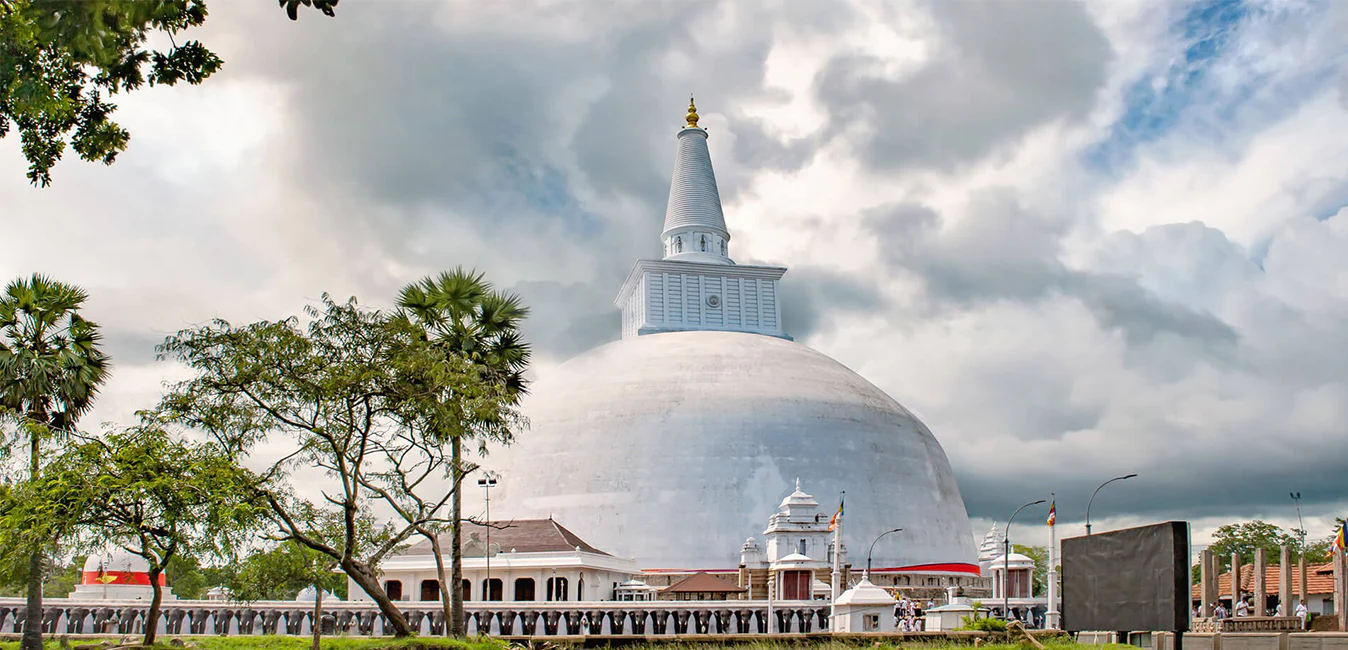
Anuradhapura City
Anuradhapura is belongs to the North Central Province in to Sri Lanka. Anuradhapura is one of the ancient capitals of Sri Lanka, famous for its well-preserved ruins of ancient Lankan civilization. The city, now a UNESCO World Heritage Site, lies 205 km north of the current capital Colombo in Sri Lanka.
Anuradhapura
Anuradhapura est une ville du district d'Anuradhapura, dans la province du Centre-Nord du Sri Lanka. Cette ville sacrée a été créée autour d'une découpe de « l'arbre des Lumières », le figuier du Bouddha, apportée au IIIe siècle avant notre ère par Sanghamitta, fondateur d'un ordre de religieuses bouddhistes. Anuradhapura, capitale politique et religieuse de Ceylan qui a prospéré pendant 1 300 ans, a été abandonnée après une invasion en 993. Caché dans une jungle dense pendant de nombreuses années, le site splendide, avec ses palais, ses monastères et ses monuments, est à nouveau accessible.
À propos du district d'Anuradhapura
Anuradhapura appartient à la province du Centre-Nord au Sri Lanka. Anuradhapura est l'une des anciennes capitales du Sri Lanka, célèbre pour ses ruines bien préservées de l'ancienne civilisation lankaise. La ville, aujourd'hui classée au patrimoine mondial de l'UNESCO, se trouve à 205 km au nord de l'actuelle capitale Colombo, au Sri Lanka.
Dans la ville sacrée d'Anuradhapura et dans les environs se trouvent un grand nombre de ruines. Les ruines se composent de trois catégories de bâtiments : les dagobas, les bâtiments monastiques et les pokuna (étangs). La ville possédait certains des systèmes d'irrigation les plus complexes du monde antique. Située dans la zone sèche du pays, l'administration a construit de nombreux réservoirs pour irriguer les terres. La plupart des civils sont cinghalais, tandis que les Tamouls et les Maures sri-lankais vivent dans le district.
Lieux spéciaux à Anuradhapura :
About Anuradhapura District
Anuradhapura is belongs to the North Central Province in to Sri Lanka. Anuradhapura is one of the ancient capitals of Sri Lanka, famous for its well-preserved ruins of ancient Lankan civilization. The city, now a UNESCO World Heritage Site, lies 205 km north of the current capital Colombo in Sri Lanka.
In the sacred city of Anuradhapura and in the vicinity are a large number of ruins. The ruins consist of three classes of buildings, dagobas, monastic buildings, and pokuna (ponds). The city had some of the most complex irrigation systems of the ancient world, situated in the dry zone of the country the administration built many tanks to irrigate the land. Most of the civilians are Sinhala, while Tamils and Sri Lankan Moors live in the district.
About North Central Province
North Central Province which is the largest province in the country covered 16% of total country's land area. North Central Province consist two districts called Polonnaruwa and Anuradhapure. Anuradhapura is the largest district in Sri Lanka. Its area is 7,128 km².
North Central Province has numerous potentials for Investors to start their Businesses, especially Agriculture, agro based industries and Livestock sectors. More than 65% of North Central Province's people depend on basic Agriculture and agro base industries. NCP also called "Wew Bendi Rajje" because there are more than 3,000 medium and large scale tanks situated in the province. Sri maha bodiya, Ruwanweli seya, Thuparama dageba, Abayagiri Monastry, Polonnaruwa Rankot wehera, Lankathilake are scared











